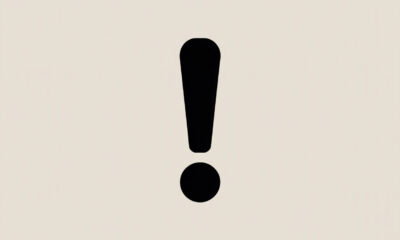informational
How to Make a Presentation Humorous: 7-Step Guide for 2025
After decades of coaching leaders, I’ve seen that most presenters lose their audience within the first minute. Why? Because the content feels dry and disconnected from the real world. Many people I’ve worked with believe that adding humor requires being a natural-born comedian. That’s simply not true. You don’t need a stand-up routine. This guide provides 7 practical steps that work for non-comedians to help create genuine connections with audiences in 2025.
Step 1: Pick a Fun Theme That Connects Your Content
Start by choosing a unifying theme from popular culture, movies, or current events that relates to your topic. This creates a structure for humor throughout your presentation. I remember one client in finance whose topic, “Quarterly Variance Analysis,” could put an espresso to sleep. We turned it into “CSI: Corporate Spending Investigation.” Suddenly, everyone in the room was an investigator, and the Q&A was livelier than ever.
Theme Examples:
-
Change “Data Security Implementation” to “Mission Impossible: Securing Your Data”
-
Transform “Marketing Strategy Overview” to “The Fast & Furious Guide to Marketing”
How to Execute a “Mission Impossible” Theme
Once you’ve chosen your theme, weave it throughout your entire presentation:
Slide Visuals:
-
Use spy-movie-inspired graphics like laser beams, fingerprint scanners, or surveillance cameras.
-
Display countdown timers before revealing key statistics.
-
Create “classified document” style layouts for important information.
-
Include silhouettes or shadowy figures for anonymity concepts.
Section Titles:
-
“Mission Brief: Understanding Current Threats”
-
“Impossible Task #1: Password Management”
-
“Your Mission, Should You Choose to Accept It: Multi-Factor Authentication”
-
“Mission Accomplished: Secure Data Victory”
Speaker Talking Points:
-
Begin sections with “Your mission, should you choose to accept it…”
-
Reference “going undercover” when discussing security protocols.
-
Use phrases like “This message will self-destruct in…” before transitions.
-
End with “Mission accomplished” when completing major points.
A theme creates natural opportunities for recurring humor without forcing one-liners [1].
Step 2: Research Your Audience for Inside Jokes and Shared Experiences
Understanding your audience’s specific frustrations and shared experiences is the foundation for humor that truly connects. This step is non-negotiable in my book, especially for external consultants presenting to organizations.
Research Methods for Finding Inside Jokes
Before Your Presentation:
Interview Key Staff Members
-
Conduct one-on-one conversations with employees at various levels.
-
Ask about internal culture, recurring themes, and workplace annoyances.
-
Focus on 3-5 people from different departments for diverse perspectives.
Search Online and Company Channels
-
Review internal Slack or Microsoft Teams channels (with permission).
-
Check company LinkedIn posts and comments for recurring themes.
-
Search relevant subreddits like r/Accounting, r/Finance, or r/ProgrammerHumor.
-
Look for memes circulating within or about the industry.
Strategic Questions to Find Humor Gold
-
“What’s a joke only people in this department would understand?”
-
“If there’s one thing people here love to complain about, what is it?”
-
“What buzzwords or acronyms make people roll their eyes?”
-
“What’s the most-used meme in your internal chats?”
-
“What’s something about your job that outsiders wouldn’t find funny?”
Focus Groups and Surveys
-
Facilitate small group discussions to surface shared frustrations.
-
Use open-ended survey questions about memorable workplace incidents.
-
Ask about common complaints that everyone can relate to.
Example Application:
“I see our IT team nodding knowingly. Yes, we’ve finally found a solution that doesn’t require explaining to users what ‘turning it off and on again’ means.”
Step 3: Master the Timing and Placement of Humor
Strategic timing transforms good humor into great humor. Poor timing can kill even the best jokes. A well-placed pause can make a line ten times funnier. For great visual examples of delivery and pacing, this YouTube tutorial is a goldmine [3].
Pacing Humor Throughout a 30-Minute Presentation
Opening (First 30 seconds)
-
Start with a light, relevant joke or funny anecdote.
-
Example: “I’ll try to keep this brief so we can all get to lunch on time.”
Every 5 Minutes
-
Integrate humor aligned with typical adult attention spans.
-
Aim for 4-6 humorous elements in a 30-minute talk.
Strategic Placement Points:
-
After dense or technical sections
-
Following data-heavy slides
-
Before transitioning to new main topics
-
When you sense energy levels might be dropping
Smooth Transition Phrases
Moving from serious topics to humor:
-
“On a lighter note…”
-
“Let me share a quick story to illustrate this point…”
-
“Sometimes, these situations remind me of…”
-
“Speaking of challenges, here’s one that made me laugh…”
Returning from humor to main content:
-
“All joking aside, what this really means is…”
-
“Now, back to our main discussion…”
-
“But seriously, the key takeaway here is…”
-
“Setting the humor aside for a moment…”
Pro Tip: This feels awkward at first, I know. But practicing these transitions out loud makes all the difference. Deliver a serious point you want the audience to remember immediately after a moment of laughter to take advantage of their heightened attention.
Step 4: Find and Create Domain-Specific Humor
I often tell speakers that generic humor is like a bad stock photo, it’s technically an image, but it connects with no one. Domain-specific humor shows you’ve done your homework and you “get” them.
Resources for Corporate and Technical Topics
|
Platform |
Best For |
Examples |
|---|---|---|
|
|
Curated boards |
Finance memes, office humor collections |
|
TikTok/Instagram |
Trending content |
|
|
|
Industry-specific |
r/Accounting, r/Finance, r/ProgrammerHumor (also mentions r/CFOmemes for finance leaders) |
|
GIPHY |
Custom creation |
Use GIPHY as a meme and GIF builder for branded content |
Content Creation Tools:
-
Canva, Kapwing, Imgflip: Customize meme templates for your topic
-
MindMeister and Bubbl.us: Collaborative mind mapping to connect ideas
-
GIPHY: Create branded GIFs or animated analogies (as noted above)
Creative Brainstorming Exercises
Reverse Brainstorming
Start with a technical concept and brainstorm exaggerated failures:
-
“What’s the worst password policy you can imagine?”
-
“How would our competitors handle this situation?”
The “X is Like Y” Analogy Game
Connect business processes to familiar experiences:
-
“How is debugging code like cleaning your kitchen?”
-
“Submitting expense reports is like trying to return something without a receipt.”
Forced Connections
Combine current business processes with trending meme formats:
-
Present “Submitting expense reports” as a dramatic villain reveal.
-
Show “Waiting for IT approval” as a suspenseful movie trailer.
Step 5: Share Personal Stories Your Audience Can Relate To
If you do nothing else, do this. Your personal stories are your greatest asset. They humanize you and make difficult topics more accessible.
Self-deprecating humor works especially well because:
-
It shows confidence and authenticity.
-
It removes perceived status barriers between you and the audience.
-
It makes you more relatable and trustworthy.
When sharing personal stories:
“After spending three weeks optimizing our process, I realized I had been measuring the wrong metric the entire time. My boss’s face looked exactly like my dog’s when he discovers I’ve eaten the last treat.”
Keep your stories brief and ensure they illustrate key points without overshadowing your main message. The best personal anecdotes contain an element of truth that resonates with common experiences [4].
Step 6: Use Visual Elements That Make People Smile
Visuals are my bread and butter. At my firm, we believe slides should pass the “glance test”, you get the idea in three seconds. Funny visuals are no different. They have to be instant. For more slide ideas, my team put together a post on 11 Tips on How to Make a Presentation Fun.
Visual Irony
-
Show someone trying to fax from a smartphone to represent outdated thinking.
-
Display exaggerated charts that highlight absurd trends.
Strategic Memes and GIFs
-
Choose visuals that enhance rather than distract from your message.
-
Make sure they’re appropriate for your professional context.
-
Use them to break up dense content sections.
Visual Exaggeration
-
Create “before and after” comparisons with dramatic differences.
-
Show timeline graphics with humorous milestones.
Remember that visual humor should clarify your points, not just entertain. As one presentation expert notes, “Your slides should be funny because they’re insightful, not just because they contain a joke” [5].

Step 7: Prepare for When Humor Fails
Believe me, I’ve been there. A joke that killed in rehearsal gets nothing but crickets. It happens. The key isn’t avoiding failure; it’s having a recovery plan.
Immediate Recovery Techniques
Acknowledge Lightly
-
“Well, I thought that was funny.”
-
“Tough crowd!”
-
“I’ll let my mom know to stop writing my jokes.”
Quick Transition Phrases
-
“Moving right along…”
-
“Let’s get back to the important stuff.”
-
“That’s why I don’t do stand-up for a living.”
Honest and Relatable Responses
-
“If this keeps up, I’ll need a new career.”
-
“I’ll stick to the script from now on.”
-
“Well, that one bombed even harder than my last attempt at baking.”
Advanced Recovery Strategies
Use the Flop as a Callback
Reference the failed joke later in your presentation to turn it into a running gag. This often gets bigger laughs than the original attempt and builds camaraderie with the audience.
Exaggerate Your Reaction
Lightly dramatize your embarrassment to add humor to the situation itself.
Keep Moving
Sometimes the smoothest recovery is simply continuing your presentation without dwelling on the moment.
Key Principle: Maintain energy and confidence. Your reaction to a failed joke often determines how the audience perceives it.
Testing and Refining Your Humor Before Going Live
Never debut untested humor in an important presentation. What seems funny in your head might not translate to your audience.
Test your humorous elements by:
-
Rehearsing with trusted colleagues who match your target audience.
-
Recording yourself and reviewing the delivery.
-
Starting with smaller audiences before big presentations.
When receiving feedback, specifically ask:
-
“Did the humor feel natural or forced?”
-
“Did any jokes distract from the main message?”
-
“Which humorous elements were most effective?”
Be prepared to modify or remove humor that doesn’t land as expected. Remember that different audiences have different sensibilities, so what works with one group might need adjustment for another.
Common Mistakes to Avoid When Adding Humor
|
Mistake |
Why It Happens |
How to Avoid |
|---|---|---|
|
Offensive humor |
Misjudging boundaries |
Stick to universally relatable topics |
|
Overusing jokes |
Trying too hard |
Limit to 2-3 planned humorous moments per 10 minutes |
|
Forced delivery |
Lack of practice |
Rehearse until it feels natural |
|
Distracting from message |
Humor for humor’s sake |
Ensure each joke supports a key point |
|
Self-conscious delivery |
Fear of failure |
Practice with friendly audiences first |
The goal is for your humor to support your message, not become the message. A rule I live by: if they remember your jokes but not your key takeaways, the presentation wasn’t a success [7].
Adapting Your Humor for Different Presentation Settings
Different contexts require different humor approaches:
Corporate Settings
-
More subtle humor works best.
-
Industry-specific references create instant connection.
-
Self-deprecating humor is safer than targeting the organization.
Educational Settings
-
Pop culture references that students recognize.
-
Humor that illustrates complex concepts.
-
Interactive humor that encourages participation.
Virtual Presentations
-
More visual humor as attention spans are shorter.
-
Shorter, punchier jokes to counter “Zoom fatigue.”
-
References to common remote work experiences.
For international audiences, avoid idioms, cultural references, and wordplay that might not translate. Instead, focus on universal experiences and visual humor [4].
Measuring the Effectiveness of Your Humorous Presentations
Look for these indicators that your humor is working:
-
Engagement signals: nodding, leaning forward, note-taking
-
Post-presentation questions that reference your humorous examples
-
Requests for your slides or materials
-
Mentions of specific humorous moments in feedback
The ultimate measure is message retention. Ask follow-up questions days after your presentation to see if your key points were remembered. Effective humor should make your content stick, not just entertain in the moment.
FAQs
How to present a presentation in a fun way?
Use a mix of personal stories, visual humor, and audience interaction. Break content into digestible chunks interspersed with lighter moments. Change your pace and tone throughout to keep energy levels high. Include interactive elements like quick polls or brief activities that get people involved.
How to create a humorous tone?
Start with a light-hearted introduction that sets expectations. Use conversational language rather than formal jargon. Smile naturally and employ vocal variety. Allow yourself to react genuinely to audience responses. Practice your timing so humor flows naturally within your content.
How to make a boring presentation exciting?
Transform data into stories with characters and conflicts. Use analogies that connect abstract concepts to familiar experiences. Add unexpected elements like props, sounds, or brief video clips. Create a narrative structure with tension and resolution rather than just listing information [5].
How do you make a catchy presentation?
Start with a provocative question or surprising statistic. Use the “rule of three” in your structure and phrasing. Employ concrete examples rather than abstract concepts. Create memorable phrases or callbacks that repeat throughout. End with a powerful statement or call to action that connects to your opening [1].
[1] https://wordcortex.com/how-to-make-a-presentation-funny/
[3] https://www.youtube.com/watch?v=c7tXMIrFf60
[4] https://effectivepresentations.com/blog/use-humor-in-presentations/
[5] https://www.inknarrates.com/post/humor-in-presentation
[7] https://www.softskillsuccess.ie/presentation-skills-resources/humour-is-a-powerful-public-speaking-tool-heres-how-to-use-it-effectively















